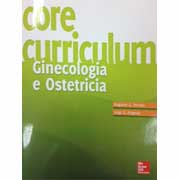51. Prospettive nell’impiego del colpocistoproctogramma nella diagnostica pre e postoperatoria relativa a pazienti affette da incontinenza urinaria da sforzo
Minerva Ginecologica. Vol. 41, pag. 1-8. 1989
( in coll. L. Gandini, M. Di Terlizzi, P. Guarnerio, G. Gabibbe, A. Ferrari )
Summary: The outlook for the use of the colpocystoproctogram in the pre and post-operative diagnosis of patients suffering from stress urinari incontinence (SUI). Colpocystoproctography is an X-Ray investigation that uses radio-opaque meterial to highligth bladder and urethra, vaginal canal and rectum. Twenty-five patients ( 7 suffering from SUI, 7 operated on for SUI and cured, 7 operated on for SUI with relapse, 4 suffering from prolapse without SUI ) were submitted to X-Ray examination so as to determine mutual space relations within the pelvic viscera and the efficiency of their support mechanisms. The following parameters were examined: the anterior angle, the urethro-pelvic angle, the vagino-pelvic angle and ano-rectal angle, the pubo-vescical distance and the position of the vescical neck with respect to the sub-pubic margin, in three different pictures recorded at rest, during voluntary contraction of the pelvic floor and the contrary condition of increase in abdominal pressure. The purpose of the study is to see which data provide useful clinical indications in the pre and post-operative stages in patients with SUI. The extreme variability of the data under dynamic conditions takes useful the investigations to the X-Ray taken with the pelvic floor at rest. It can be stated that the anterior angle (a.v.30°) espresses the anatomic condition of the vescical neck supports, the vagino-pelvic angle ( a.v. 106° ) is an indicator of the support function of the vaginal walls with respect to the cervico-trigonal region, while good elevation on the neck of the bladder and its closeness to the posterior side of the pubic bone are necessary for complete cure. Colpocystoproctography may therefore represent an important diagnostic tool for assessing what operation available today is the most suitable for correcting the anatomic defect.
